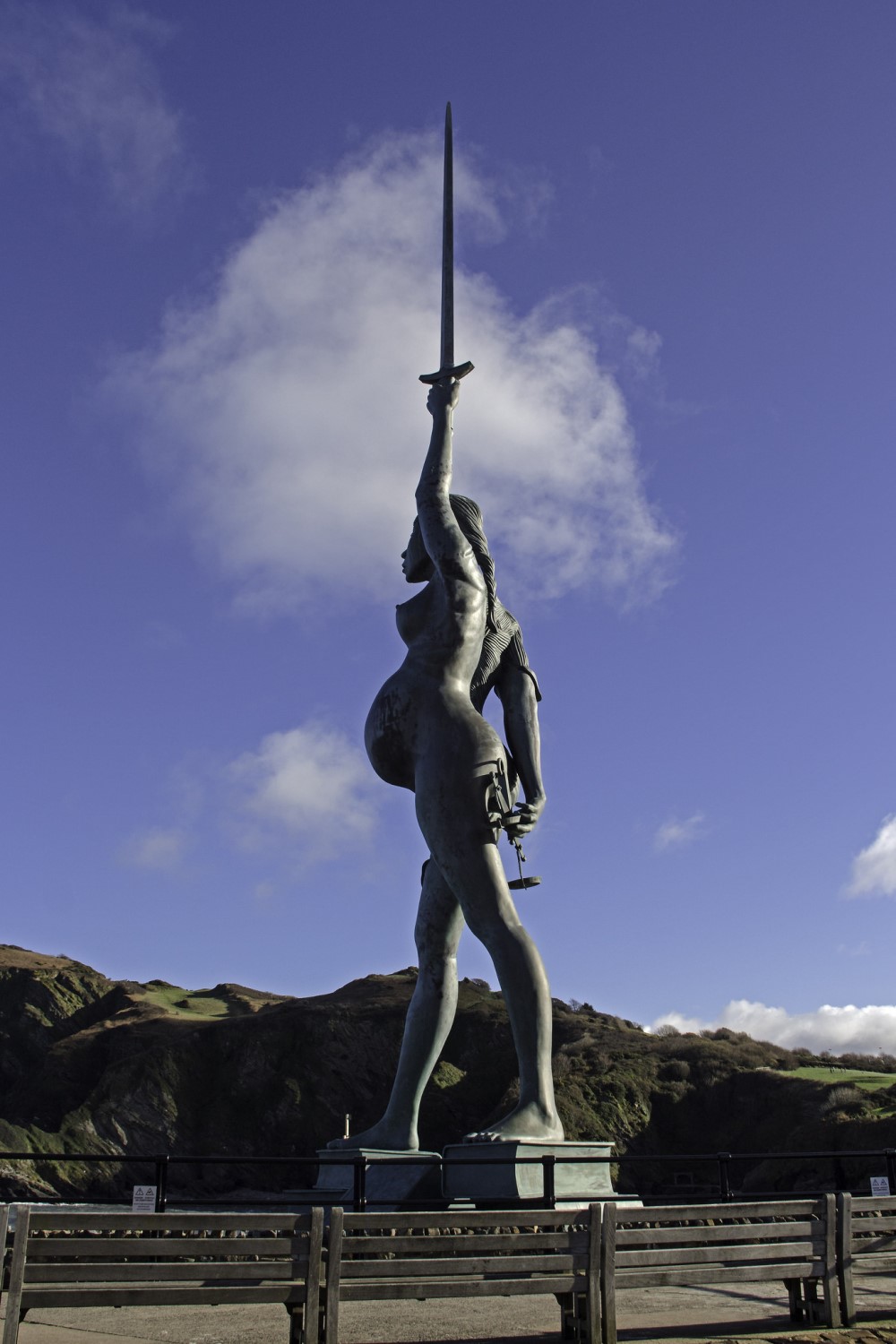
Damien Hirst’s creative impulse is a gamble: when he comes up with an idea, some sort of art god flips a coin to decide whether it is going to be wonderful (shark, cows) or dreadful (his paintings). Or perhaps the coin is simply flipped to decide whether you, the viewer, will think it is dreadful or wonderful? Hirst’s only consistent quality seems to be his ability to polarize. Verity (2003–2012)—a sixty-five foot, twenty-five tonne statue of a demi-flayed pregnant woman standing on books and holding a sword aloft in Ilfracombe, Devon—is a lot of people’s idea of dreadful art: gaudily ugly, headline-grabbing, blatant in its symbolism and allusions to other monumental works of sculpture. But it’s also the work of public art we deserve.
Verity was erected in 2012, after Hirst, living close by, responded to the town’s tourism drive and offered a work on a twenty-year loan. The one he chose was from the part of his oeuvre engaging with what can accurately and historically be called “grotesques”. Inspired by cabinets of curiosities, foetuses in jars and seventeenth century waxworks of blonde beauties with their insides exposed, they are just as much of a mixture of anatomical study and weird fetish as their originators were.
Verity provoked extreme reactions in the locals and art world commentators when it first went up. The art world was pretty unanimous in panning it, and the majority of locals didn’t know what to make of it. Yet it encouraged tourism, and Hirst even opened a harbour-front restaurant housing some of his other works nearby, both capitalising on and amplifying his statue’s social impact. Ilfracombe was now “Hirst-on-sea” in the eyes of the press, and, regardless of whether that name was intended as a snide barb originally, Hirst undeniably became a force of good for the area, bringing in jobs, a souvenir trade, and outside investment in general. But this year he shut down his restaurant and gallery. Now locals are blaming Hirst for killing trade in the area by owning three prime properties and leaving them empty.

“Verity is a lot of people’s idea of dreadful art: gaudily ugly, headline-grabbing, blatant in its symbolism”
In short, Verity enacted, in microcosm, the whole cycle of public art: the arguments for and against it. If Antony Gormley’s Angel of the North (1998) in its time stood for progress under the first Labour government in years, and a celebration of industry in an area that had its industry gutted for over a decade, Verity—ten inches taller than Gormley’s sculpture—is a work that embodies the fluctuations of the free market, the capricious back and forth of public opinion, and travelling across the country to a lovely seaside only to look through your phone at a piece of metal. One was a work for locals to be proud of, the other was a work not for locals to be ashamed of—it wasn’t their fault—but to resent the imposition of.
Let’s continue with the comparisons. Meant to stand for rebirth and regeneration, which it certainly did for a time, it now could equally be seen as the false promise of gentrification. Standing as it does, looking out to sea with its sword up high, it could soon also symbolize the ugly insularity of Britain in a post-Brexit future, shafted by its own optimism. Damien Hirst has always liked his symbolism and allegory on a massive, almost impersonal scale. His best and worst works beg to be loaded with meaning: you can make them stand for whatever you like, as long as the themes are broad and unsubtle. Verity takes this to its furthest extreme.
Photos by Mark Robinson
Hungry to know more about the contemporary art world and the stories from it? Head to Elephant Kiosk to check out our collection of art books and magazines.





